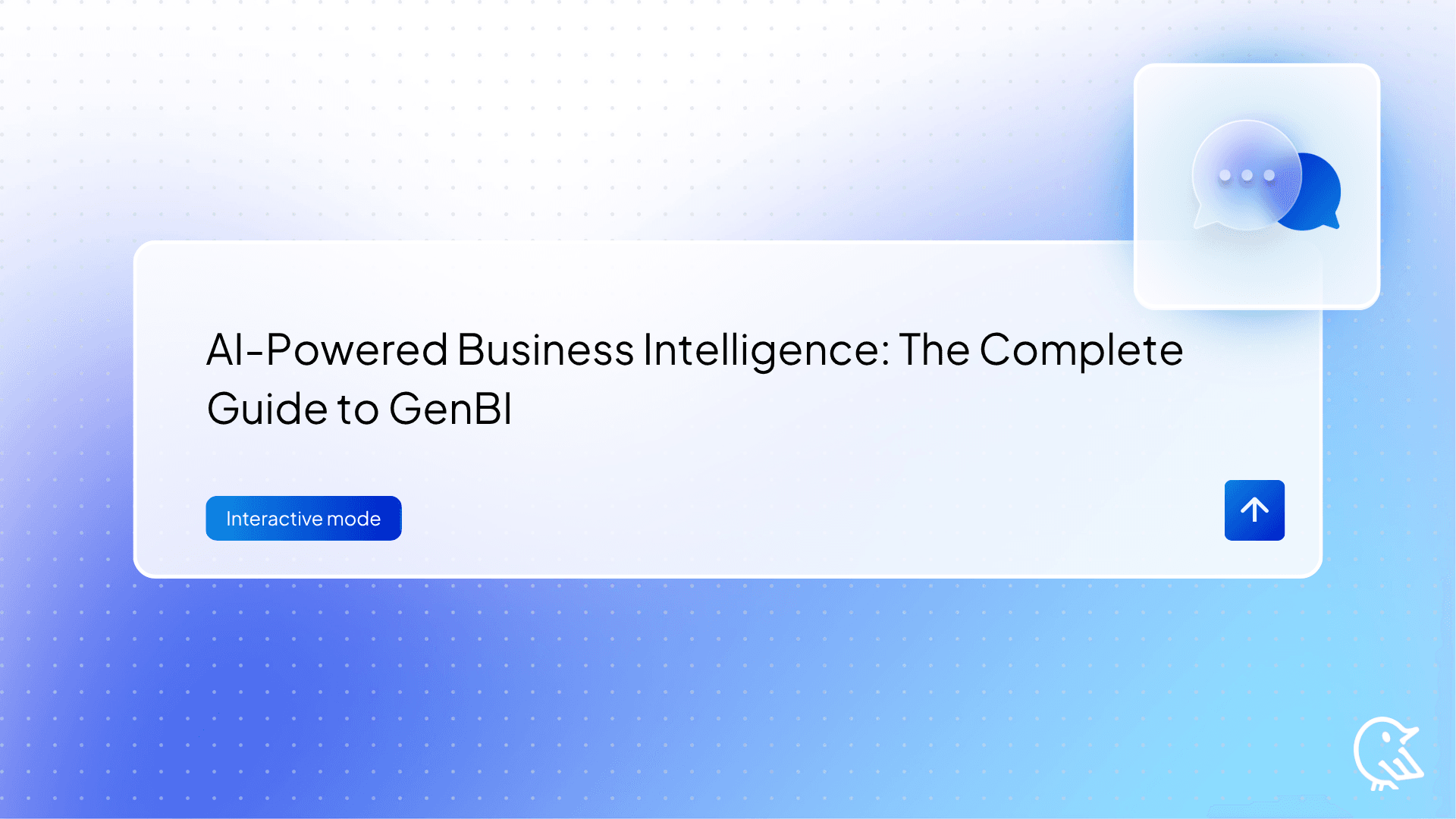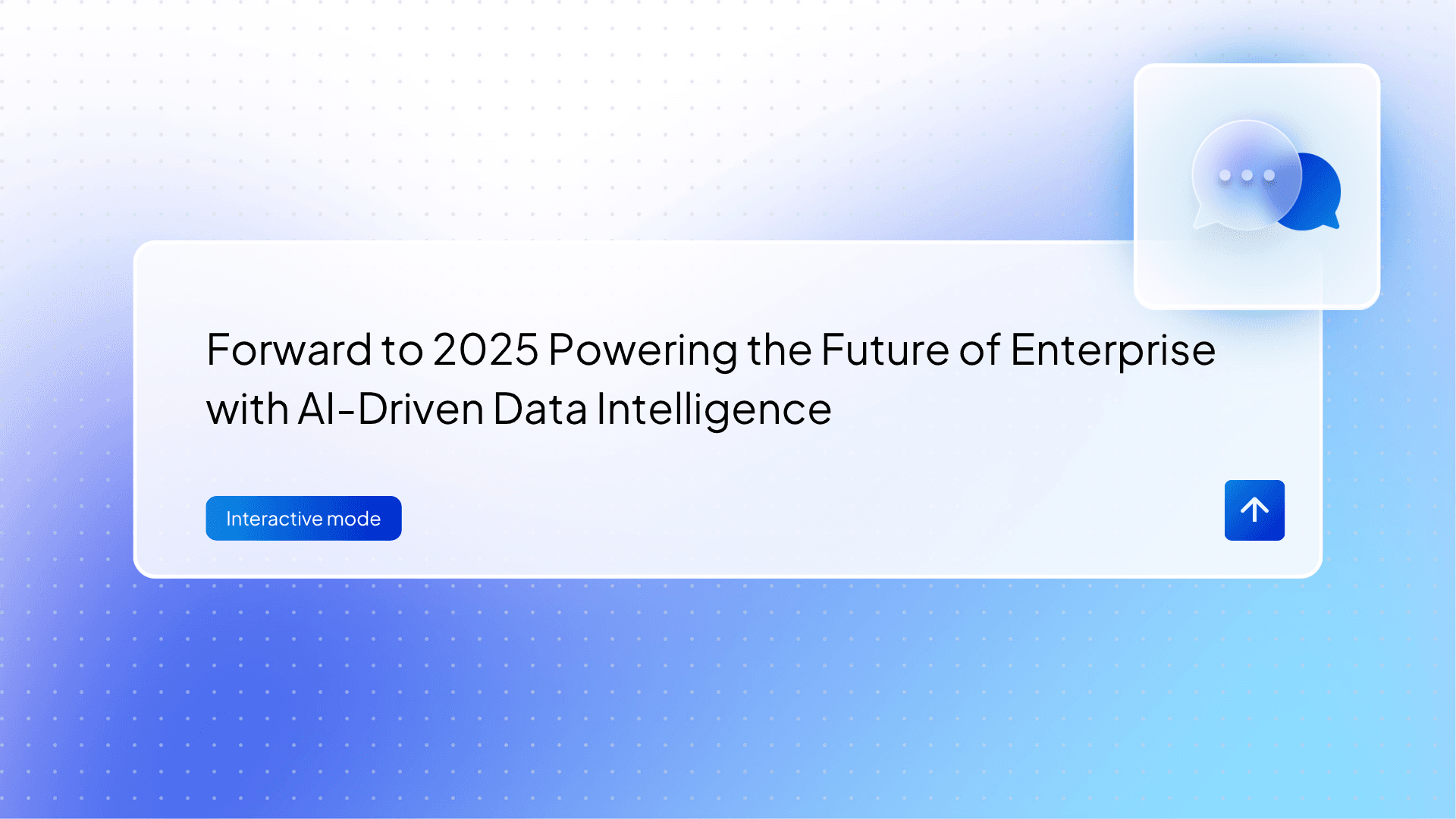The End of the Great Centralization: Why the Future of Enterprise Data is Distributed
How GenBI and AI Agents are replacing the costly “Single Source of Truth” model with a decentralized, pipeline-free SQL architecture.

Howard Chi
Updated: Nov 25, 2025
Published: Nov 25, 2025

For the past decade, the holy grail of enterprise data architecture has been defined by a single, monolithic concept: The Single Source of Truth (SSOT).
The industry playbook has been identical for every company, from Series B startups to Fortune 500 giants. We have been told that the only way to make data useful is to move it. We have spent billions of dollars and millions of engineering hours building pipelines to pump data from our operational databases, our PostgreSQL production clusters, our MySQL shards, our on-premise Oracle servers into one massive, centralized repository, be it a Snowflake Data Cloud, a Databricks Lakehouse, or Google BigQuery.
I have spoken to hundreds of CIOs, CDOs, and data leaders over the last few years. The narrative is always the same: “We are drowning in ETL maintenance,” or “We are spending a fortune replicating data that already exists in our production systems, just so we can run a simple query.”
The logic was sound for the pre-AI era. We centralized data because compute was distinct from storage, but connectivity was “dumb.” To analyze data from your Billing System (PostgreSQL) alongside your Legacy ERP (SQL Server), you had to physically co-locate the bytes, normalize the schemas, and force them into a third location (the Warehouse).
Centralization was an infrastructure workaround for a lack of semantic intelligence in the connectivity layer.
But I am here to tell you that the era of the Great Centralization is ending.
We are entering the GenBI (Generative Business Intelligence) era. And in this era, the competitive advantage will not belong to the companies with the biggest, most expensive data warehouses. It will belong to the companies that stop moving data and start understanding it where it lives.
The future of data is decentralized.
The “Data Tax” of the Centralized Warehouse
Let’s be honest about the hidden costs of the “Single Source of Truth” model.
In the traditional modern data stack, the IT and Data teams are essentially serving as high-friction movers. If a business user wants to analyze live inventory (sitting in an operational MySQL DB) against historical sales trends (sitting in Snowflake), the current workflow is painful:
- Ingestion: You must build a pipeline (Fivetran/Airbyte) to replicate the MySQL table into Snowflake.
- Transformation: You must write dbt models to clean up the raw operational data to match the warehouse schema.
- Storage Costs: You are now paying to store the data twice. Once in the operational DB (for the app) and once in the Warehouse (for the analyst).
- Latency: The “truth” in the warehouse is always lagging. It is a snapshot of the world as it was 6, 12, or 24 hours ago.
This is the Data Tax. We are paying a premium in cloud credits and engineering time to solve a problem that is primarily about access, not storage.
We didn’t centralize data because it was the most efficient way to architect a system. We centralized it because it was the only way to standardize the SQL dialect and the schema so that a human analyst could write a query.
The GenBI Paradigm Shift: The AI Agent as the Polyglot SQL Engine
Generative AI, and specifically the rise of the AI Agent, has fundamentally broken this constraint. In the GenBI era, we no longer need to physically move data to a common location to make it “speak the same language.” The AI Agent is the translator.
At Wren AI, we are building for a reality where the SQL-speaking Agent is the new aggregation layer.
The future AI Agent doesn’t care that your product data is in a sharded PostgreSQL cluster, your financial records are in an Oracle database, and your web events are in ClickHouse. It treats the entire enterprise network as a virtual warehouse.
When a user asks a question, the Agent does not look up a pre-aggregated table in Snowflake. Instead, it:
- Understands the Intent: It translates the business question into a semantic plan.
- Federates the Logic: It knows that “Revenue” is calculated in the Oracle DB, but “Active Users” is defined in the Postgres DB.
- Generates Native SQL: It writes the specific SQL dialect required for each source system — PL/SQL for Oracle, T-SQL for Microsoft, standard SQL for Postgres.
- Aggregates at the Edge: It retrieves the results and combines them in the inference layer.
This moves us from an architecture of Physical Aggregation (ETL) to Logical Aggregation (Semantic Mesh).
The Anatomy of a Decentralized Future
Imagine an architecture where we stop treating data as “oil” to be pumped into a single refinery and start treating it as a “grid” of interconnected power stations.
Here is how the decentralized GenBI stack changes the game for SQL-heavy enterprises:
1. Zero-ETL for Operational Analytics
The biggest friction in BI today is the gap between “Production” (OLTP) and “Analytics” (OLAP).
Business users often need real-time answers. “How many users signed up in the last hour?” “Is the inventory for SKU-123 low right now?”
In the centralized model, you have to say, “Wait for the warehouse update tomorrow.”
In the decentralized GenBI model, the AI Agent connects securely to a read-replica of your production database. It allows business users to safely query operational data in real-time without the Data Engineering team needing to build a pipeline first. The “Source of Truth” for operational data is the operating system itself, not a stale copy.
2. Bridging the “Legacy” Gap
Most enterprises are not 100% cloud-native. They have a messy reality. They have a Snowflake instance for the new stuff, but critical business logic is locked inside a legacy SQL Server or an on-premises Oracle instance.
Migrating that legacy data to the cloud is often a multi-year nightmare involving massive schema refactoring.
Decentralized GenBI solves this by leaving the data where it is. The AI Agent can connect to the legacy SQL Server just as easily as it connects to Snowflake. It bridges the modern and the legacy worlds through a unified semantic layer (the Modeling Definition Language), allowing users to join data across generations of infrastructure without a migration project.
3. Reducing the “Data Swamp”
One of the unintended consequences of the Data Lake era is the “Data Swamp,” vast amounts of raw data dumped into cloud storage “ just in case ” we need to query it later. This is expensive and creates governance hazards.
By shifting to a decentralized model, we adopt a “Query-in-Place” philosophy. We don’t move the data until we have a proven need to model it. The AI Agent explores the data in its original habitat. This dramatically reduces the storage footprint and ensures that the data being queried is always the most granular, original version, not a watered-down aggregation.
The New Role of the Data Team: The Semantic Architects
I know what the Data Engineers are thinking: “If we let AI query production databases and disparate warehouses, won’t performance tank? Won’t governance collapse?”
This is where the Data Team's role evolves from Builders of Pipelines to Architects of Semantics. In the decentralized GenBI vision (and how we architect Wren AI), the AI doesn’t just guess. It operates on a Semantic Layer.
The Data Team’s job is to define the relationships and definitions.
- They define that the
user_idcolumn in the Postgresuserstable maps to thecustomer_ref_idin the Snowflakeorderstable. - They define the secure SQL subsets that the Agent is allowed to touch.
- They define the metrics (e.g., “ARR”, “Churn”) in code (MDL).
Once this Semantic Layer is defined, the AI Agent executes within those guardrails. It ensures that queries are optimized, that sensitive columns are ignored, and that the joins across heterogeneous databases are logically sound.
The Data Team stops debugging broken Airbyte connectors and starts modeling the business logic. They become the enablers of intelligence, not the bottleneck of infrastructure.
The Vision: The Virtual Data Warehouse
We are moving toward a concept of a Virtual Data Warehouse.
The physical location of the data, whether it’s on AWS RDS, Azure SQL, a local ClickHouse cluster, or Snowflake, is becoming an implementation detail that the business user shouldn’t care about.
The “Single Source of Truth” is no longer a specific database instance. The Single Source of Truth is the Semantic Layer.
If you have the right Semantic Layer and the right GenBI Agent, your “Data Warehouse” is effectively the total of every SQL-compatible database in your organization, instantly accessible, and always up to date.
At Wren AI, we are seeing this shift unfold in real time. We are seeing customers connect their high-speed operational databases directly to their BI interface, bypassing the warehouse entirely for tactical decision-making. They are asking to join distinct datasets, like a legacy inventory DB and a modern e-commerce DB, simply by telling the AI how they relate.
The “Great Centralization” was a necessary phase of our industry’s maturity. It taught us the value of clean data. But it is time to move on.
The future is not about building a bigger lake. It’s about creating a smarter map. It is about empowering the AI to go to the data, speak the language of SQL native to that source, and bring back the insight.
It is time to stop moving data and start solving problems.
Get Started Today
Ready to experience enterprise GenBI?
🚀 Try Wren AI: Visit getwren.ai for a free trial. Connect your databases in minutes and start asking questions in plain English.
🔗 Star Wren AI on GitHub: Join 1.4k+ developers building the future of conversational business intelligence.
💬 Join the Community: Connect with data teams already scaling their analytics with Wren AI’s semantic-driven approach.
Remember: The future of BI is conversational. The question isn’t whether AI will transform how we work with data — it’s whether you’ll lead that transformation or follow it.
Don’t wait for perfect data. Start where you are, learn as you go, and let Wren AI handle the complexity of turning questions into insights.
Supercharge Your
Data with AI Today
Join thousands of data teams already using Wren AI to make data-driven decisions faster and more efficiently.
Start Free TrialRelated Posts
Related Posts

AI-Powered Business Intelligence: The Complete Guide to GenBI
Discover how Generative Business Intelligence (GenBI) powered by Wren AI is transforming data access with conversational AI, real-time insights, and intuitive decision-making tools for modern enterprises

Forward to 2025 Powering the Future of Enterprise with AI-Driven Data Intelligence
A Year of Wren AI Growth and Vision for the Future

Fueling the Next Wave of AI Agents Building the Foundation for Future MCP Clients and Enterprise Data Access
How Wren Engine Powers the Semantic Layer for AI-Driven Workflows — Unlocking Context-Aware Intelligence Across the MCP Ecosystem

